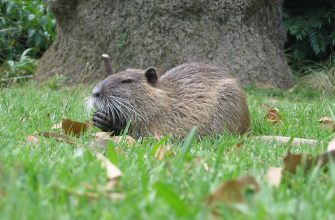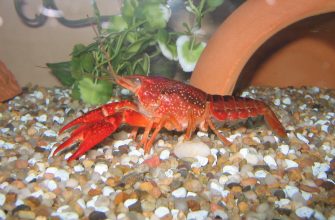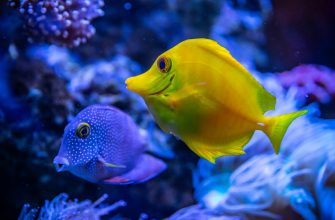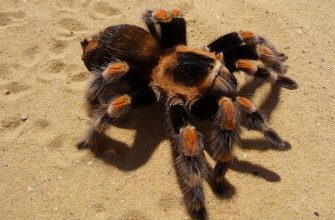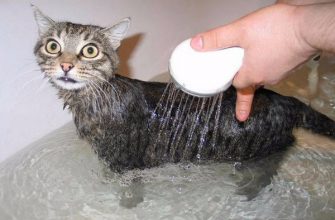Small pet rodents often suffer from having a relatively inactive lifestyle. They are very limited in activity by being locked in cages, albeit spacious ones. Tunnels and labyrinths were conceived to diversify the pets’ activities and to prevent obesity. Pet rodents can travel through them, taking a new route every time.
Why do small pet rodents need tunnels and labyrinths?
Comfortable conditions must be created for any pet. In the case of pet rodents, they not only need food, water and a clean cage, but also exercise options – things actively helping to pass the time. In addition to an exercise wheel it is advisable to provide the pet with:
-
a tunnel that resembles burrows with numerous passageways and branches;
-
a labyrinth with obstacles, where a rodent can not simply go through, but must climb a ladder, run over a bridge.
In their natural environment, rodents live in burrows. There they escape predators and store food supplies. Being inside a tunnel, pet rodents feel comfortable and safe. It often happens that the animals even settle in the tunnel for the night. Therefore, if the owner does not see the pet in its cage, it is worth looking into the tunnel. Most likely, the rodent will be found there.
In nature small rodents are constantly on the move. In order not to become a meal for predators, they are forced to hide and escape. The search for food also requires travelling long distances. There is no danger to the animal if it is a pet rodent living in a cage and fed by an owner. But if the rodent does not move much, it is threatened with obesity, which directly reduces the pet’s life expectancy.
So tunnels and labyrinths are essential items to stimulate small rodents for exercises, which they need a lot, and this is a great way to keep pets fit and happy.
The different types of tunnels and labyrinths
Play space for pet rodents can be created both inside and outside a cage. Therefore, there are internal and external tunnels and labyrinths.
The size of the internal ones depends on how spacious a cage is. Of course, it is impossible to place a massive, challenging design structure in a limited space. Built-in tunnels or labyrinths give the pet opportunity to be entertained at any time.
The external ones provide a mobile animal with a long track with a lot of obstacles. Such tunnels can even spread across a room, so an energetic pet will have plenty to run around in. External labyrinths with many branches, dead ends and doors certainly will not let the small rodent become bored.
However, the price issue should not be forgotten. A cage equipped with built-in tunnels or labyrinths will cost a considerable amount, but by buying exercise options separately you can save a lot of money. Also, a zone for active exercises can be built with your own hands.
Criteria in choosing tunnels and labyrinths
The safety of small rodents must always be kept in mind when arranging an exercise zone for them. It is important to check fastenings to ensure they are secure.
Bottlenecks, where the animal can get stuck, are unacceptable. The rodent must be able to pass freely through any part of a tunnel or labyrinth. Any time the pet could have the urge to turn around to start moving in the opposite direction. If the animal cannot do this, then the structure is not suitable.
It is necessary to make sure that there are no difficulties on the track that will become impossible or even dangerous. For example, if the pet is not able to climb the next step, get over a barrier or the descent to another level is too steep, the animal could have a significant fall and get injured.
When choosing tunnels and labyrinths, the following points are worth considering:
-
Avoid small items.
A curious animal can swallow small parts of the construction so these must be avoided. If the rodent decides to chew something, an owner must be sure that the pet will not be harmed. There are even special edible tubes and labyrinths. Their walls are made of products that are part of pets’ diet. A rodent travels along the track and at the same time has a snack.
-
The exercise area can be dismantled.
The pet may store food or leave toilet waste in a secluded corner of the structure. That’s why tunnels and labyrinths must be cleaned periodically and if they have dismountable constructions, it will easier to clean them.
-
There are no sections where the animal is out of sight.
It is always good that the owner can visualize the pet during play and exercise, and if anything happens, he or she is ready to help at any time.
-
Ventilation holes.
Labyrinths and tunnels that are long and poorly ventilated should not be used. In addition to entry and exit points, air must penetrate inside the structure along its entire length through ventilation holes.
Plastic tunnels are the most popular. However, there are also wooden and textile units designed as extras to complement the play or exercise space.
Labyrinths are usually made from wood. They are more like multi-storey lodges with ladders and comfy spots for the pet to relax in.
Introducing the pet to a new play and exercise area
When buying a small pet rodent, it is not recommended to provide it immediately with a mass of play and exercise options. Give the pet time to get used to its new surroundings.
It may happen that the rodent is wary of a new play area. Yes, the pet looks at it with interest, but hasn’t the courage to approach. In this case, you can resort to the trick of putting bits of treat near the entrance, then a little further away, inside the tunnel or labyrinth. Guided by the smell of food, the animal will get in the structure. This way the pet understands that there is nothing to fear and will soon fully get used to it, running around and climbing over obstacles.
Don’t force the rodent into the labyrinth and don’t lock it in the tunnel either. The pet will get used to it and appreciate it in the fullness of time. Just give the pet chance to realize that there is no danger and only entertainment waiting for it inside.
Is it possible to make tunnels and labyrinths yourself?
With a little effort, tunnels and labyrinths can be handcrafted using available materials. For example, you can make a tunnel out of plastic bottles. Usually 1.5-liter bottles are used. When joining them together, make sure there are no sharp edges. Do not forget to cut out ventilation holes. It is very satisfying to watch a small rodent travelling through a tunnel made of plastic bottles, because the pet doesn’t go out of sight.
A labyrinth can be made out of cardboard. It is necessary to have blanks with slots with which they will be connected, to insert one into the other like elements of a construction set. All that remains is to randomly make holes and dead ends. Of course, the cardboard labyrinth will not last long, but it will definitely please your pet.
If there are children in the house, they will probably want to build an obstacle course from a construction set. The main thing is to put aside small pieces, and only use the larger blocks.
When creating a tunnel or labyrinth for a small rodent, the age of the pet must be taken into account. So, a young animal will enjoy running along long tracks and exploring tangled paths, whereas an older animal might not be able to manage such a journey.
